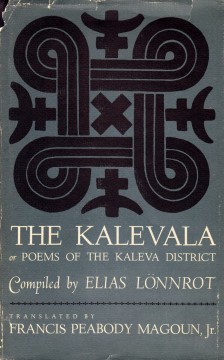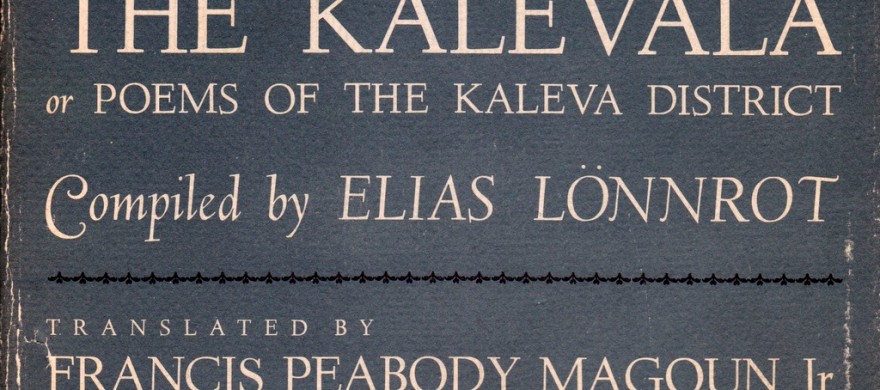Francis Peabody Magoun 1963
In 1963 an important prose translation of the Kalevala was published. It was translated directly from Finnish and specifically for research purposes. The translation was made by Francis Peabody Magoun, who was a professor of English language at Harvard university and he had studied Finnish. The thorough prose translation The Kalevala or Poems of the Kaleva District was meant to be used as a handbook for researchers studying the Middle Ages and for comparative studies. It was also used as a course book for students studying European folklore.

Francis Peabody Magoun’s translation was published in 1963.
Magoun’s research focused on ancient folk culture. He developed theoretical and methodological frameworks for his work and was one of the first scientifically acknowledged translators of the folktales by the Grimm brothers. Magoun was influenced by folklore and research on oral tradition and he combined methods used in these fields of research with his work with Anglo-Saxon poetry. For example, Magoun proposed that the written Anglo-Saxon poetry was fundamentally based on traditional oral presentations, oral tradition in which plenty of pre-Christian ideas and values had been instilled. The views presented by Magoun were both accepted and criticised by researchers, who were experts on the Middle Ages. Critics defended the interpretations that Anglo-Saxon poetry was formed of texts written by individual writers, and that the texts were influenced by both Christian and possibly pre-Christian texts, or that the texts were based on purely Christian elements or values.
With his Kalevala, which was translated directly from Finnish into English, Magoun aimed at producing a work of high quality, both according to scientific measures and in terms of readability. The goal was also to avoid the inaccuracies of the previous translations and the monotony of meter poetry. Magoun wanted to create a prose translation in which the original text would be reflected in each and every line in order to easily detect repetitions, parallelisms and variations. Furthermore, the aim was also to better than before communicate the lyrical parts, metaphors, the dry humour as well as the wonderful stories and the homey realism of the Kalevala.
From Cecilia Af Forselles: “Englanninkieliset käännökset. Kalevalan muuttuvat ylikansalliset tehtävät” – Kalevala maailmalla. Helsinki: SKS. 2012.

